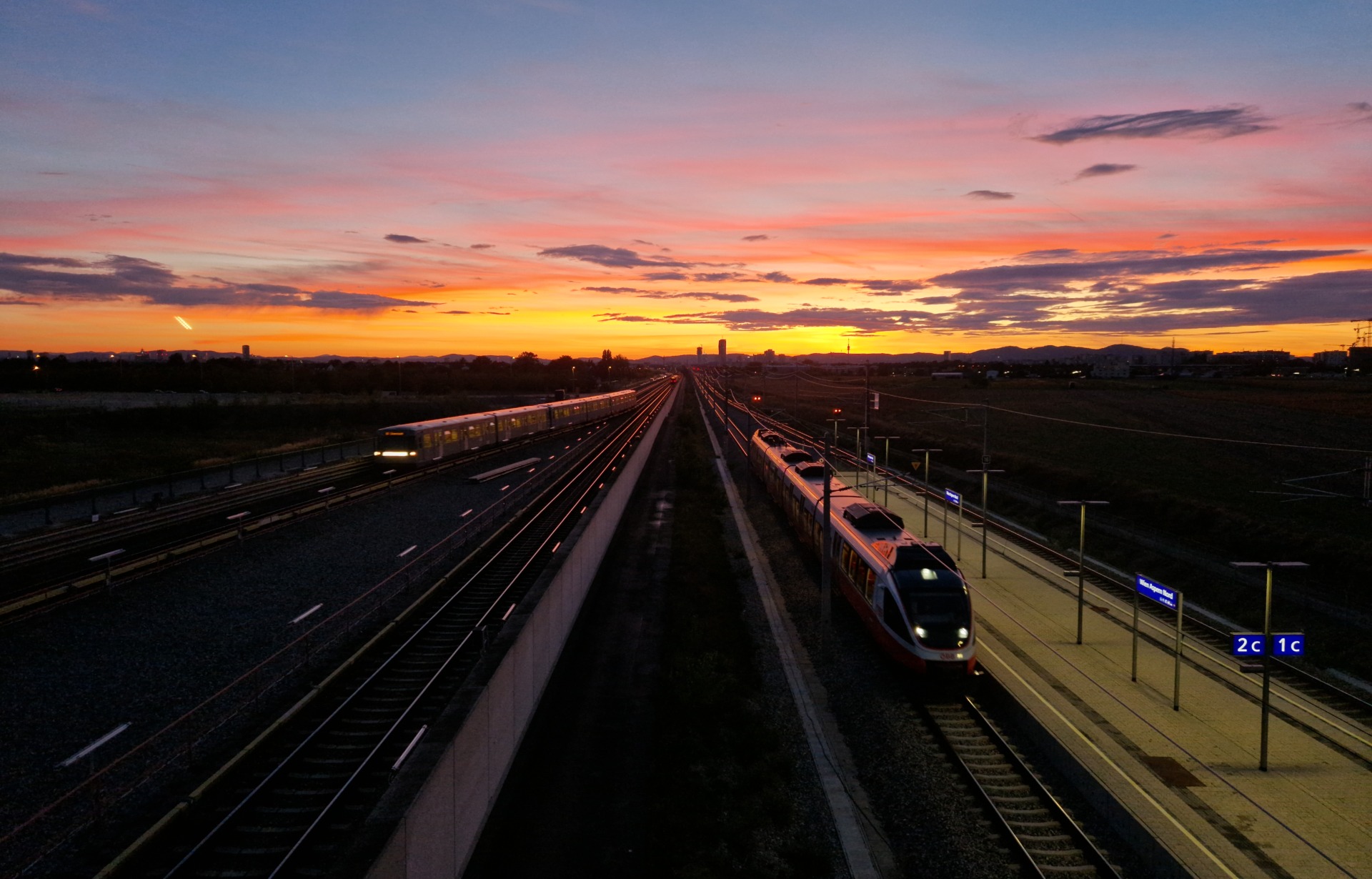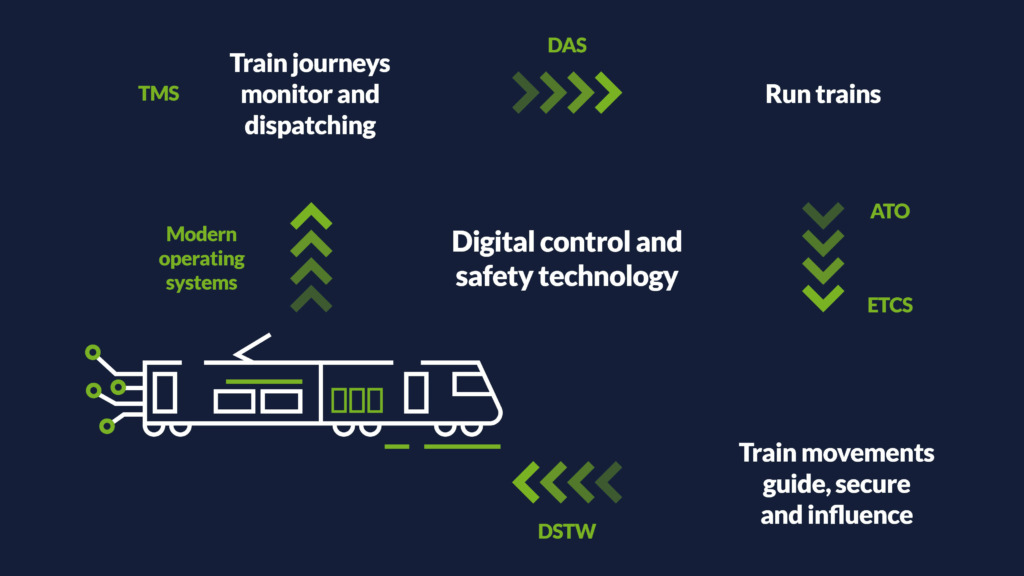
The Digital Future of Rail Networks
Meeting the highest safety standards as a prerequisite for the transport transition
Rail networks are among safety-critical infrastructures and are therefore subject to particularly high requirements in the development process, especially with regard to testing, approvals, and migration or commissioning. There is also high demand for rail operations to be modernized and digitalized in order to increase performance and optimize the economic efficiency of rail transport as a result of climate protection targets and the transport transition.
In addition to the close integration of railway operational processes with the control, command and signaling (CCS) technology including operating systems, a large number of system components such as digital interlockings, including external installations, train protection (European Train Control System, ETCS), traffic management systems (TMS) together with automatic train operation (ATO) and integrated operating systems, fixed networks and mobile networks (Future Railway Mobile Communication System, FRMCS), IT security etc. must be taken into account in the various phases of their life cycle and their interfaces, which contributes to a high level of system complexity.
Furthermore, legal requirements with regard to European interoperability, non-discriminatory network access, financing by public authorities, award procedures, authorizations, approvals, and often also political framework conditions lead to a further increase in the complexity of innovation projects.

quattron offers the following services with a holistic view of control, command and signaling technology
- Establishment and updating of operational and technical targets
- Development of technology strategies
- Recording and evaluation of technical/operational requirements
- Analysis of infrastructure and operational data
- Product and market analyses
- Equipment/migration strategies
- Financing concepts
- Feasibility studies
This takes into account quality targets, the optimization of life cycle costs (LCC), the creation of optimum organizational conditions for facility and maintenance management, as well as the fulfilment of all regulatory and legal requirements.
We can update methods of railway operations studies in such a way that they accurately reflect aspects of the system network. This allows us to quantify safety aspects (e.g. braking curves and standstill points), track capacity, and operational quality. We prepare the findings for specific target groups in order to discuss interactions between trades on both a technical and political level.
Further information can be found under Processes & Organisationen.
Additional Services
Get in touch!
Follow Us